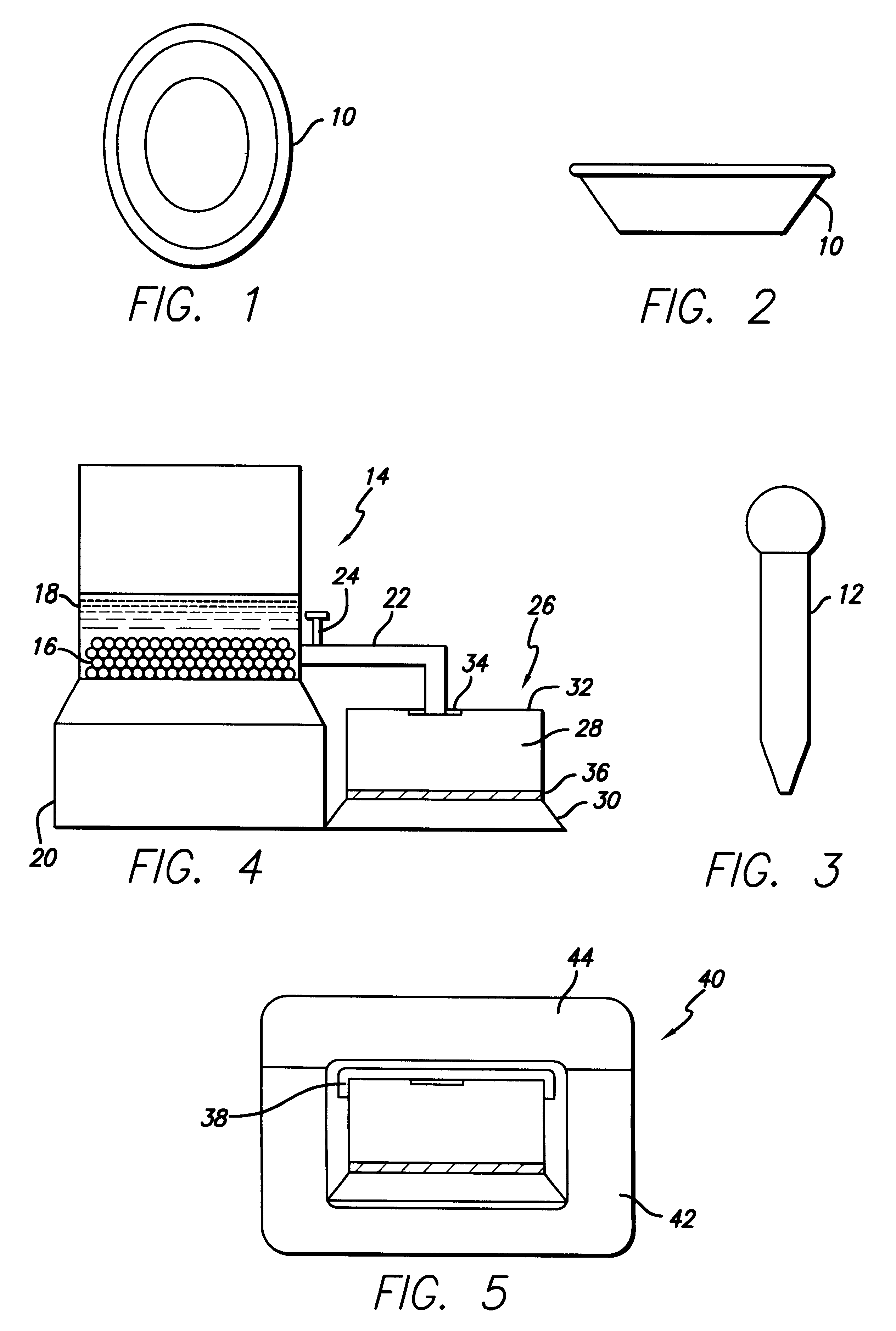Method and system for production and collection of lavage induced stool (LIS) for chemical and biologic tests of cells
a production system and cell technology, applied in the field of gastrointestinal disease screening tests, can solve the problems of invasiveness, rapid destruction of exfoliated cells, high cost,
- Summary
- Abstract
- Description
- Claims
- Application Information
AI Technical Summary
Benefits of technology
Problems solved by technology
Method used
Image
Examples
Embodiment Construction
After reading the instructions in the instruction brochure, a subject is restricted to ingestion of the provided drink and / or candies while concomitantly ingesting in proper sequence the substances provided by the kit.
Step 1
Initial Cathartic Administration with Feces Collection
Subject takes provided cathartic for preliminary purge with leads to defecation of formed or semi-liquid stool. The first and second bowel motions induced by the cathartic are collected using the apparatus provided by the kit and transferred to two collection containers, one for solid and one for liquid stool. Both are saved for further analysis when the test procedure incorporates analysis of formed stool as an adjunct. Subjects are allowed the electrolyte beverage ad lib during this step until feces collection is finished.
Step 2
Preliminary Lavage Administration
Subject drinks 500 ml of mannitol solution reconstituted according to kit instructions in the provided beverage container. Each stool generated after ...
PUM
 Login to View More
Login to View More Abstract
Description
Claims
Application Information
 Login to View More
Login to View More - R&D
- Intellectual Property
- Life Sciences
- Materials
- Tech Scout
- Unparalleled Data Quality
- Higher Quality Content
- 60% Fewer Hallucinations
Browse by: Latest US Patents, China's latest patents, Technical Efficacy Thesaurus, Application Domain, Technology Topic, Popular Technical Reports.
© 2025 PatSnap. All rights reserved.Legal|Privacy policy|Modern Slavery Act Transparency Statement|Sitemap|About US| Contact US: help@patsnap.com

